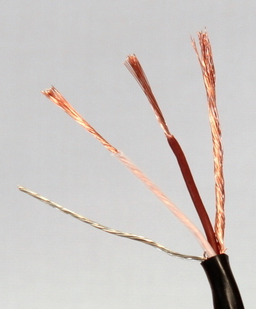This depends on a very important principal in electronics called "impedance". Impedance is just like resistance but more abstract because it applies to AC signals and not just DC. For example, a capacitor in series with a signal conductor will make the resistance infinitely high. But an AC signal can pass through so the resistance of the components connected to that signal conductor defines it's impedance. A tube guitar amp is a great example to describe impedance. The input is usually very high impedance at maybe 1M ohm. But it's output impedance is very low at a fraction of an ohm.
So how does this apply to your question? If a signal conductor is high impedance, it will more easily pick up noise from other nearby signal wires or parts that emit electromagnetic noise like heater wires. This is because the current of the source noise is relatively weak. So a low impedance signal wire will easily absorb and thus attenuate that noise. But a high impedance signal wire will not attenuate as much and thus the noise will more easily bleed into the circuit. If that signal is then amplified, the noise will also be amplified.
So tube guitar amps are particular susceptible to this sort of issue. For eample, if you have a level control that is say 500K, the wiper impedance is going to be potentially 100K impedance or more. This can easily pickup noise. For this reason, signal conductors that are high impedance should be shielded. This might just be two ground conductors on either side of it in a ribbon cable. But that might actually not be enough. Using a shielded conductor that has a full shield wrapped around it, could make a noticeable difference in noise. Using the level control as an example, I like to use two conductor full-shield like this:

It's difficult to see but one of the conductors has clear insulation around it. And node that the shield is twisted and pulled away but normally inside the jacket it's wrapped around the two conductors very neatly. That level coverage is actually important for stopping noise. Also note the 4th wire there - that's actually just a "drain" wire which is connected to the shield but it's much easier to solder to something (as opposed to twisting up the shield into a "wire" which would be messy).
So for a level control for example, you could run the signal out to the pot on one conductor, return on the other and then use the shield as ground.
But a ribbon cable with ground on either side could work well too. Using shielded conductor's like I just described is slightly pedantic.



